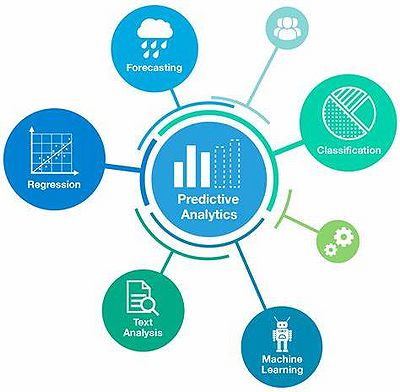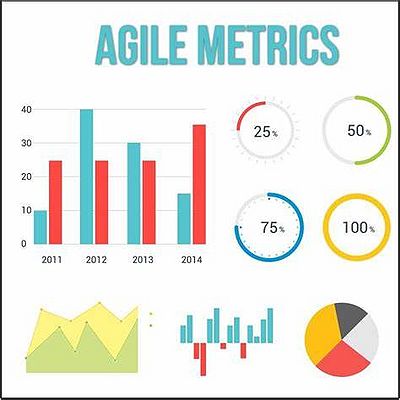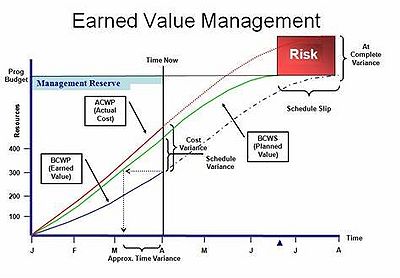Project Analytics
Created by Nikolaos Kavros
Contents |
Introduction
Analytics and project management are two related fields that can be used together to drive business success. Analytics refers to the systematic examination of data or statistics to gain insights and make informed decisions. It can involve a variety of techniques and tools, such as data mining, predictive modelling, and data visualization. In the context of project management, analytics can be used to monitor project performance, identify trends and patterns, and make data-driven decisions about project direction and priorities. Project management, on the other hand, is the process of planning, executing, and closing the work of a team to achieve specific goals and meet specific success criteria. It involves defining project scope, setting project goals and objectives, developing a project plan, assembling a project team, and monitoring progress throughout the project lifecycle. By combining these two fields, organizations can leverage the insights gained from analytics to inform project decisions and prioritize initiatives that are most likely to drive business success. Additionally, project managers can use analytics to monitor progress and adjust project plans as needed to ensure that projects remain on track and achieve their desired outcomes.
Definition
Project analytics is the process of analysing data and metrics related to a project in order to gain insights and make informed decisions. It involves collecting, organizing, and analysing data from various sources, such as project management software, financial systems, and team collaboration tools. The goal of project analytics is to provide project managers and stakeholders with valuable information about the performance of the project, identify potential risks and opportunities, and make data-driven decisions that can help improve project outcomes.[1] Examples of project analytics include analysing project schedules, budgets, resource allocation, team productivity, and project risks. By using project analytics, project managers can gain a deeper understanding of the project and its progress, and make adjustments and course corrections as needed to ensure project success.[2]
Use and implementation
One of the most significant advantages of using analytics in projects is the ability to track key performance indicators (KPIs). KPIs are metrics that measure the success of a project against specific goals. By monitoring KPIs, project managers can quickly identify potential issues and take corrective action to keep the project on track. In addition to tracking KPIs, analytics can also help project managers identify patterns in project data. By analysing past project data, project managers can identify trends that can be used to optimize project performance in the future. This data can also help project managers to identify potential areas of risk, allowing them to take steps to mitigate these risks before they become a problem. Analytics can also be used to improve communication and collaboration within project teams. By analysing project data, project managers can identify areas where team members may need additional support or training. This information can then be used to develop targeted training programs or to allocate resources where they are needed most. Another advantage of using analytics in projects is the ability to optimize resource allocation. By analysing data on resource utilization, project managers can identify areas where resources are being overused or underused. This information can then be used to reallocate resources to maximize their effectiveness. Finally, analytics can help project managers to improve project outcomes by providing insights into customer behaviour and preferences. By analysing customer data, project managers can gain insights into customer needs, preferences, and behaviour. This information can be used to develop products and services that better meet customer needs, increasing customer satisfaction and driving revenue growth.[3]
Data Analytics stages (Life cycle)
The first phase is the identification of the key challenges of the project and the conclusion of the most critical business issues (e.g. financial project status, different team's efficiency, effective decision making in different stages of the project, examine company trends). Identify the data sources and finally develop preliminary hypothesis that can be tested with data.
The second step is data understanding and includes the following steps:
1. Data collection
2. Data exploration
3. Identification of data availability and quality
The third step is data preparation in order to proceed to the analysis and modelling later on. In most cases a large amount of data is gathered, so the next step is model planning. It is essential to choose the proper variables and create a suitable model with an efficient approach and techniques.
The fourth stage includes model building. Data sets creation is part of this stage for testing, training and production. Finally the model is assessed before moving on to the next stage.
The fifth part addresses if the model results meet the previous phase-matched criteria. If the answer is positive, the analysis can continue otherwise previous steps should be re-examined. Analysts evaluate and review results and communication process starts with key stakeholders.
The final stage (result's communication) offers the stakeholders a complete report including:
- results
- technical analysis
- potential improvements
Likewise, it is required to conclude on the best approach and method to present useful insights in the future.[4]
Analytics categorization
Depending on the data we want to obtain and analyse, there are the following categories:
1. Descriptive Analytics: This category of analytics involves analysing historical data to understand what has happened in the past. Descriptive analytics is used to summarize, aggregate, and visualize data to gain insights into patterns, trends, and relationships.
2. Diagnostic Analytics: Diagnostic analytics involves digging deeper into data to understand why certain events or patterns occurred in the past. This category of analytics is used to identify the root causes of problems or issues.
3. Predictive Analytics: Predictive analytics involves using historical data and statistical models to forecast future events or trends. This category of analytics is used to make predictions about future outcomes, such as customer behaviour or market trends.
4. Prescriptive Analytics: Prescriptive analytics involves using data and models to make recommendations for specific actions or decisions. This category of analytics is used to optimize and improve business processes, such as supply chain management or marketing strategies.[5]
5. Cognitive Analytics: Cognitive analytics involves the use of artificial intelligence and machine learning to analyse data and identify patterns and trends that are not immediately obvious. This category of analytics is used to identify new opportunities and insights that can drive innovation and competitive advantage.[6]
6. Spatial Analytics: Spatial analytics involves the analysis of data that has a geographic or spatial component. This category of analytics is used to understand patterns and relationships within geographic areas and to make decisions based on spatial data.[7]
7. Text Analytics: Text analytics involves the analysis of unstructured data, such as text documents or social media posts. This category of analytics is used to extract insights from unstructured data and to understand the sentiment and opinions of customers or stakeholders.[8]
8. Web Analytics: Web analytics involves the analysis of data related to website traffic and user behaviour. This category of analytics is used to understand how users interact with websites and to optimize website design and user experience.
This article focuses on the first four types of analytics which are referring to data analytics. However, it is important to mention all the other types of analytics and their significance.
Analytics graphic tools
1. Earned Value Management (EVM) Analysis: EVM is a project management technique used to measure project performance by integrating scope, time, and cost. By analysing EVM data, project managers can identify the progress of the project in real-time, as well as potential delays and cost overruns. The following graph shows an example of an EVM chart, which compares the planned value (PV), earned value (EV), and actual cost (AC) of a project over time.[9]
2. Predictive Analytics: Predictive analytics can help project managers identify potential project risks and estimate the likelihood of those risks occurring. By analysing data from past projects, project managers can use predictive analytics to forecast potential problems and take proactive measures to mitigate them. The following graph shows an example of a predictive analytics chart and what processes are carried out in order to forecast the potential risks of a project.

3. Agile Metrics: Agile project management methodologies focus on delivering high-quality results through iterative and incremental development. Agile metrics can help project managers measure progress and identify areas for improvement. The following graph shows an example of an agile metrics chart, which tracks the number of user stories completed and the number of defects found over time.

Overall, these graphs demonstrate how analytics can help project managers track progress, identify potential risks, and make data-driven decisions to improve project outcomes.
Limitations
While analytics can be incredibly useful in helping to guide and inform project decisions, there are several limitations that can arise when using analytics in projects. Here are a few examples:
1. Limited data: Analytics relies on data, and if there isn't enough data available, or the data is of poor quality, then the insights gained from analytics may not be accurate or useful. In some cases, it may not be possible to obtain the necessary data to inform a project, which can limit the usefulness of analytics.
2. Limited scope: Analytics can only provide insights into the data that is available. If the scope of the project is too narrow or doesn't include all of the relevant data, then the insights gained from analytics may not be comprehensive enough to make informed decisions.
3. Limited understanding: Analytics is a complex field that requires a deep understanding of statistics and data analysis. If the team responsible for implementing analytics in a project doesn't have a strong understanding of the field, they may not be able to properly analyse the data, leading to inaccurate or misleading insights.
4. Human bias: Analytics can be influenced by the biases of the people collecting, analysing, and interpreting the data. If these biases aren't accounted for, they can skew the insights gained from analytics, leading to incorrect or biased decisions.
5. Cost and time: Collecting and analysing data can be a time-consuming and expensive process. In some cases, the cost and time required to gather and analyse data may not be worth the insights gained, particularly in smaller projects or projects with limited budgets. It's important to be aware of these limitations when using analytics in projects to ensure that the insights gained are accurate, comprehensive, and useful.[12]
Conclusion
In conclusion, analytics is an essential tool for project managers looking to optimize project performance, improve team collaboration, and increase customer satisfaction. By leveraging data analytics, project managers can gain insights into project performance, identify areas for improvement, and make data-driven decisions that improve project outcomes. As the importance of data continues to grow, analytics will become an increasingly critical tool for project managers in every industry. There are several categories of analytics that are commonly used in the fields of business, data science, and other areas. Some of the most common categories of analytics include:
Key references
- ↑ The data-driven project manager: Using analytics to improve outcomes | CIO
- ↑ Harjit Singh, 2015. Project Management Analytics: A Data-Driven Approach to Making Rational and Effective Project Decisions
- ↑ Cornelius Fichtner, The Project Management Podcast
- ↑ Grolemund G, Wickham H. R for data science [Internet]. Available from: https://r4ds.had.co.nz/explore-intro.html
- ↑ https://online.hbs.edu/blog/post/types-of-data-analysis
- ↑ https://www.dataversity.net/fundamentals-of-cognitiveanalytics
- ↑ https://www.pwc.com/
- ↑ https://azure.microsoft.com/en-us/products/cognitive-services/text-analytics/
- ↑ https://project-management.info/earned-value-analysis-management-eva-evm/
- ↑ https://www.blastanalytics.com/predictive-analytics-consulting
- ↑ https://pm-training.net/agile-development-methodology-wiki/100agiletechniques/
- ↑ Michael Brenner, Forbes, July 13 2018. Limitations of Analytics: What you need to know

